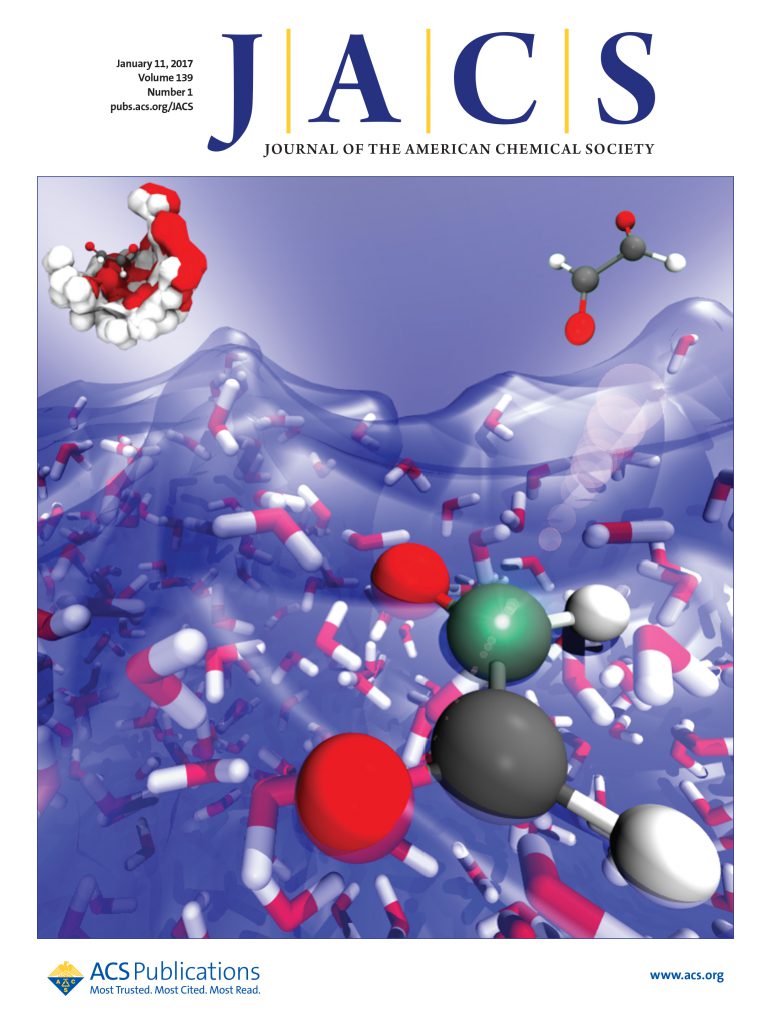Ribosomal Incorporation of Fluorosulfonyloxy-l-Phenylalanine into Macrocyclic Peptides for De Novo Target-Specific Covalent Binders.
IF 14.4
1区 化学
Q1 CHEMISTRY, MULTIDISCIPLINARY
引用次数: 0
Abstract
Macrocyclic peptides are emerging as a promising molecular framework in covalent drug development due to their high specificity, affinity, and low toxicity, addressing challenges such as off-target effects and nonspecific binding associated with traditional covalent binders. Although mRNA display technology has advanced the discovery of covalent peptide binders, it has primarily focused on cysteine residues, thereby limiting the diversity of targetable proteins. In this study, we ribosomally incorporated 4-fluorosulfonyloxy-l-phenylalanine (FSY) into macrocyclic peptides, enabling the construction of a diverse covalent macrocyclic peptide library for de novo screening against human α-thrombin and fibroblast activation protein. This led to the identification of novel peptides with covalent binding capabilities and a distinct dissociation profile, which in turn enabled potent inhibitory activities at concentrations within the low nanomolar range. Notably, FSY-bearing macrocyclic peptides conjugated with a radionuclide chelator demonstrated significantly improved tumor-selective uptake and prolonged retention, outperforming their noncovalent counterparts while underscoring their remarkable potential in targeted radionuclide therapy. This study provided a robust and efficient platform for the de novo discovery of FSY-bearing macrocyclic peptides, broadening the scope of covalent drug development for diverse biomedical applications.核糖体将氟磺酰氧基-l-苯丙氨酸结合到大环肽中用于新靶标特异性共价结合物。
由于其高特异性、亲和性和低毒性,大环肽正成为共价药物开发中一个有前途的分子框架,解决了传统共价结合物的脱靶效应和非特异性结合等挑战。虽然mRNA展示技术促进了共价肽结合物的发现,但它主要集中在半胱氨酸残基上,从而限制了可靶向蛋白的多样性。在本研究中,我们通过核糖体将4-氟磺酰基氧基-l-苯丙氨酸(FSY)整合到大环肽中,构建了多种共价大环肽文库,用于对人α-凝血酶和成纤维细胞激活蛋白进行重新筛选。这导致鉴定出具有共价结合能力和独特解离谱的新型肽,这反过来又使低纳摩尔浓度范围内的有效抑制活性成为可能。值得注意的是,与放射性核素螯合剂结合的含fsi的大环肽显着改善了肿瘤选择性摄取和延长了保留时间,优于其非共价对应物,同时强调了其在靶向放射性核素治疗中的显着潜力。该研究为含fsy大环肽的新发现提供了一个强大而高效的平台,拓宽了共价药物开发的范围,可用于多种生物医学应用。
本文章由计算机程序翻译,如有差异,请以英文原文为准。
求助全文
约1分钟内获得全文
求助全文
来源期刊
CiteScore
24.40
自引率
6.00%
发文量
2398
审稿时长
1.6 months
期刊介绍:
The flagship journal of the American Chemical Society, known as the Journal of the American Chemical Society (JACS), has been a prestigious publication since its establishment in 1879. It holds a preeminent position in the field of chemistry and related interdisciplinary sciences. JACS is committed to disseminating cutting-edge research papers, covering a wide range of topics, and encompasses approximately 19,000 pages of Articles, Communications, and Perspectives annually. With a weekly publication frequency, JACS plays a vital role in advancing the field of chemistry by providing essential research.

 求助内容:
求助内容: 应助结果提醒方式:
应助结果提醒方式:


